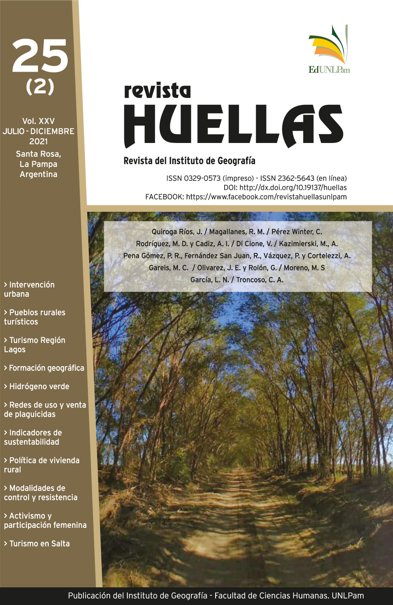Indicadores de sustentabilidade: pegada ecológica e capacidade de carga local. O caso de General Pueyrredó
Palavras-chave:
sustentabilidade, economia ecológica, indicadores biofísicos, déficit ecológicoResumo
Entre os indicadores biofísicos que relacionam a disponibilidade de recursos de um território com o consumo que deles realiza a população se encontra a Pegada Ecológica (PE) e a Capacidade de Carga Local (CCL). De maneira conjunta advertem o grau de sustentabilidade de um território. O objetivo do estudo é analisar a situação de sustentabilidade de General Pueyrredón e sua principal cidade (Mar del Plata) a partir da leitura de dois indicadores: PE e CCL. A metodologia desenvolvida considera os alinhamentos propostos por Wackernagel e Rees (1996) ajustada às características da zona de interesse, logo se estima a CCL e se analisam as relações entre ambos indicadores. Os resultados mostram uma demanda que excede a CCL com a que conta o partido de General Pueyrredón, particularidade que expõe uma situação de déficit ecológico ao ser a PE maior à CCL, devendo-se cobrir parte da demanda local com a capacidade de carga apropriada (CCA) de outros ecossistemas (importação de biocapacidade).






.png)












3.jpg)


